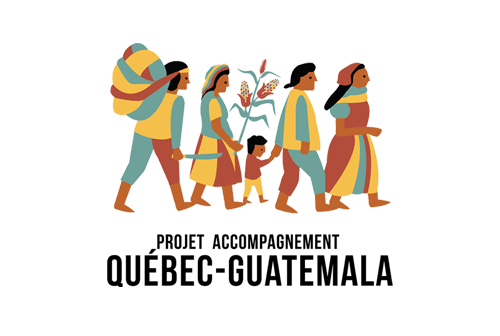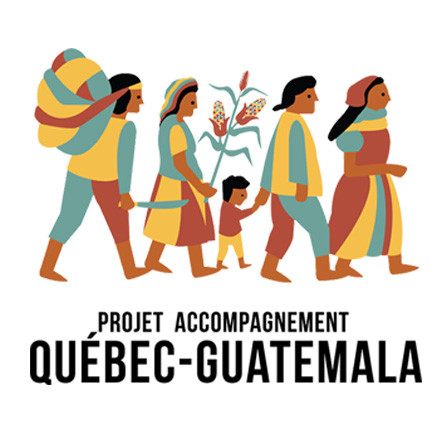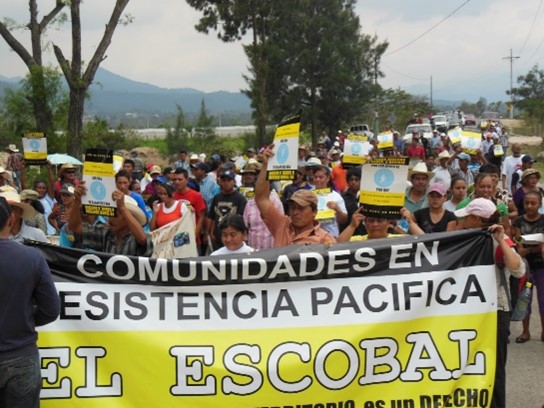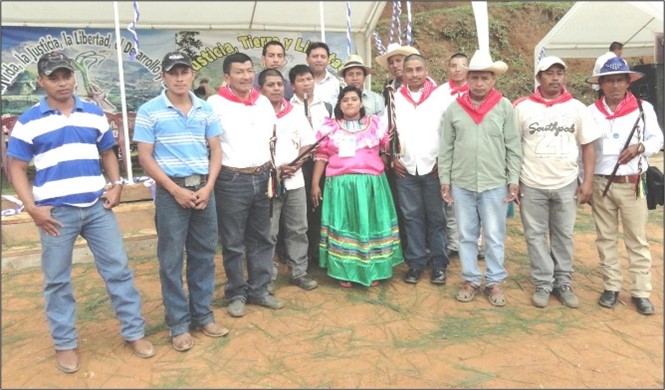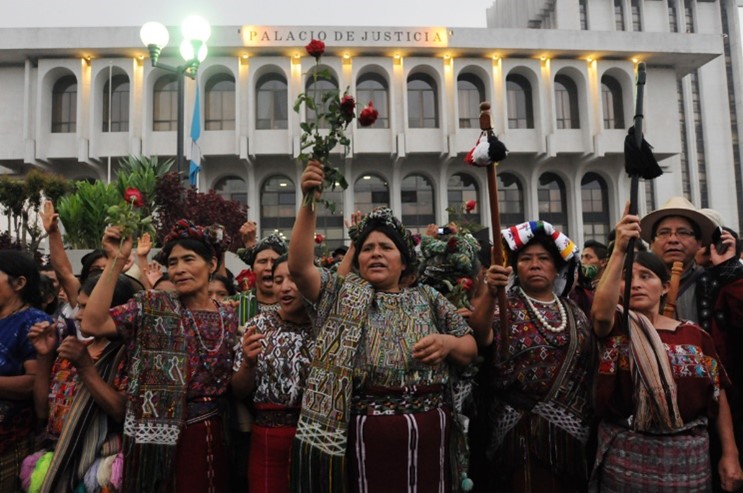PROCÈS DE RIOS MONTT
Compte rendu d’Elisabeth Patterson sur le procès de Rios Montt
PUBLIÉ PAR ELISABETH PATTERSON
THE RIOS MONTT TRIAL: HAVE ANY EFFORTS BEEN MADE TO INTEGRATE THE MAYAN PERSPECTIVE?
I have been monitoring in Guatemala City for the past four days the trial of former generals Rios Montt and Rodriguez Sanchez with several lawyers from Lawyers without Borders Canada (“LWBC”). As I work mainly with indigenous communities in Canada, LWBC asked me to observe the trial from the perspective of the integration of the indigenous dimension into the trial process. Considering that all the lay witnesses in the case are Mayan, certain adjustments to the regular legal process were clearly unavoidable. But were any additional efforts made?
Rios Montt, de facto head of state in Guatemala from March 1982 to August 1983, and Rodriguez Sanchez, head of military intelligence at the time, are being tried under Guatemalan law for genocide and crimes against humanity, due to their alleged role in planning and carrying out the massacre of approximately 1,770 members of the Ixil people, a Mayan tribe in the northwestern highlands of Guatemala. The massacres are alleged to have been carried out by soldiers and military-backed militias.
The crime of genocide under Guatemalan law requires proving the murder of members of an ethnic group, or another form of serious physical violence against them, with the intent to destroy partially or completely the ethnic group in question. The prosecution will attempt to prove that Mr. Rios Montt and Mr. Rodriguez Sanchez were the intellectual authors of the mass killings of the Ixil people, with the objective of destroying them.
The UN Declaration on the Rights of Indigenous Peoples, which Guatemala voted in favour of, states for example that national courts should give due consideration to the customs, traditions, rules and legal systems of the indigenous peoples concerned (art. 40). The Constitution of Guatemala requires that the Guatemalan State recognise, respect and promote the customs of its Mayan peoples (art. 66).
I provide here my first impressions concerning the cultural dimension of the trial and the efforts that were made to adapt it to the indigenous reality. These are based on my presence in the courtroom for the first four days of the trial and on interviews with the victims’ lawyers, the victims’ Ixil translator and with some of the witnesses already having testified.
STRONG INDIGENOUS PRESENCE
As we arrived on the first day of the trial on March 19th, a ceremonial Maya grass and flower floor tapestry had been laid out in front of the courthouse, with candles and photos of people allegedly killed during the reign of generals Montt and Sanchez. A rather small group of women, some indigenous, were playing drum and making speeches asking that justice be rendered concerning the genocide.
A little later, about fifty demonstrators, mainly indigenous, arrived with large printed banners supporting General Rios Montt. Using a megaphone, their non-indigenous leader tried to drown out the woman with the drum, praising the General for having brought peace and democracy to Guatemala. Rios Montt supporters often argue that the massacres were justified due to the risk caused by the leftist insurgency allegedly present in the Ixil area.
In the courtroom, a significant portion of the public was indigenous, as evidenced by the ornate huipiles and headscarves worn by the women. Some of the men also wore dignified red and black embroidered jackets. Community members who were not able to attend the court sessions were able to follow the proceedings translated into Ixil on the radio. A livestream (in Ixil and Spanish) of the trial is also available.
INTIMIDATING ATMOSPHERE
The setting in which the proceedings are taking place are likely intimidating for the indigenous witnesses: the gigantic room with high ceilings, the three judges placed high up in a towering position, the audience of 500 people, and the army of photographers and cameras from the national and international media.
Another no doubt upsetting experience is the fact that the witnesses must swear on the Constitution of Guatemala, with the warning that if they lie, they can be fined up to approximately US$1500 and can be sent to prison. Having suffered so much at the hands of the Guatemalan state, it is understandable that this could generate a great deal of fear, as I was told by the witnesses’ escort.
No doubt on purpose, the defence lawyers added a great deal of intimidation. Rodriguez Sanchez’s lawyer, César Calderon, which I nicknamed “El Griton” (the yeller) consistently yelled out his questions whenever cross-examining the soft-spoken, timid Ixil witnesses. They also repeatedly tried to confuse witnesses by alleging that they had said certain things which in fact had not been said.
Surprisingly, despite all the pressure, the victims were able to give their testimony very calmly, clearly and slowly. Some of the witnesses did cry silently during their testimony, which prompted a mad rush by photographers. I learnt afterwards that many of those who did not cry during their testimony had often broken down as soon as they stepped out of the courtroom.
In order not to be too terrorized by the presence of the former dictator and head of military intelligence, the victims had been told by their lawyers not to even glance at the accused.
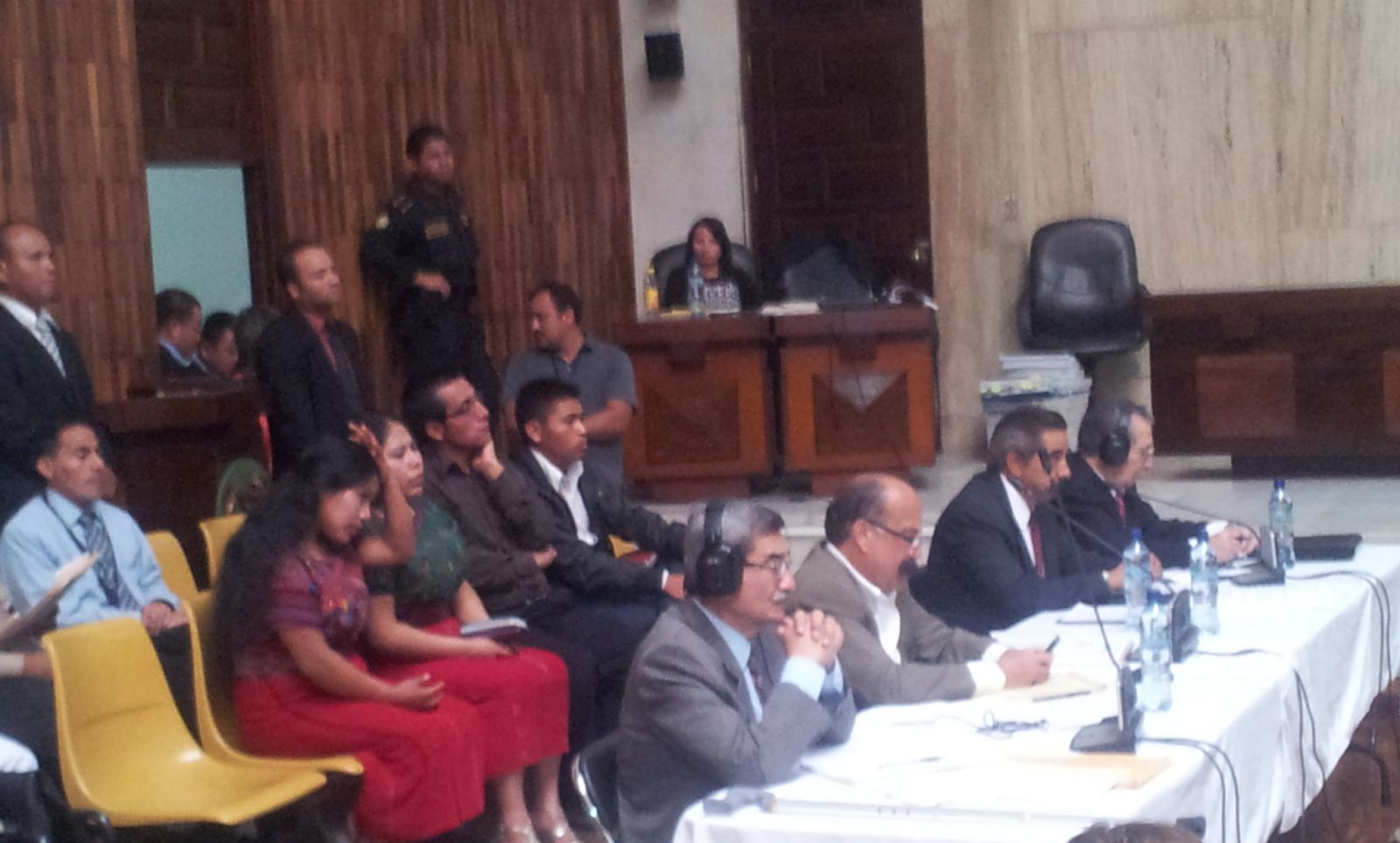
TRANSLATION ISSUES
Not surprisingly, translation issues are quite at the forefront of the case.
The witnesses’ first, and in many cases only, language is Ixil, a Mayan dialect. The Court was apparently not planning on having translation initially, but it realized it had no choice but to provide interpreters if it wished to hear the oral testimonies of the witnesses.
Three official interpreters for the three Ixil dialects were hired by the High Risk Tribunal A to enable the witnesses to give their testimony in their own language. However, to speed up the process, the judge, Yassmin Barrios, strongly encouraged witnesses to do their testimony in Spanish, if they understood “just a little bit of Spanish”. Several witnesses started off without an interpreter (at the insistence of Judge Barrios, even though they had said they did not understand Spanish), but ended their testimony with one once it became obvious that they did not understand the questions.
The victims also counted on the presence of three unofficial translators, who were listening to the translation made by the official interpreter to ensure conformity with what the witness was actually saying. Furthermore, at the end of the second day, the defence team also made a request to bring their own Ixil interpreters.
An interpreter always needs to make choices regarding how to translate sentences, based on the context. There is always a risk that the interpreter has misunderstood what the witness wished to say. If the interpreter is neutral, errors can arise simply because of a misunderstanding. If the translator has an agenda of his own, he may consciously wish to modify the translation.
Here are a few of the translation issues that came up during the first few days of the trial.
On the second day of the trial, one survivor was explaining how his father had been shot in the head by the soldiers. He was asked the date and the official interpreter translated his response as 1972. Defense lawyer Calderon later jumped on this in his cross-examination, stating that his testimony could not be used as the case was examining the period 1982-83. It turned out the witness had said 1982 and that there had been an error by the official translator.
Another difficulty arose due to the fact that in Ixil, the gender is not always evident when using pronouns, whereas in Spanish it is. For example, when talking, there often is no distinction between “he” and “she”. Also, the same word may be used, whether the word is plural or singular. This caused some confusion and harsh cross-examination of one witness when he had mentioned the word “soldier” which had first been translated as singular, whereas the survivor had meant “soldiers”.
“GUERILLA” OR “STRANGLE”?
As soon as the defence lawyers obtained their own translators, they made generous use of language issues to interrupt and confuse the witnesses, and to deliberately raise incendiary issues which had not been mentioned by the witness.
One of the clearest examples to date occurred on the third day of the trial. A survivor was explaining how his father was very weak and had not been able to escape when the army came to their village. His father being so weak, a soldier came towards him and squeezed his neck briefly, killing him on the spot. But during the cross-examination of this witness, the defence lawyer began asking questions about when and how anti-government guerilla had come to their village. The victims’ lawyers objected. The defence lawyer continued, stating that their own Ixil interpreter had indicated to them that the witness had talked about the guerilla during his testimony.
The victims’ interpreter then intervened to explain that the defence interpreter was confusing “potsh” which means to strangle with “otsh” which is the word which the Ixiles were using to refer to the guerilla. The witness was referring to his father being strangled, and the Ixil interpreter had used this word to affirm that the witness was stating that there were guerillas present in the village. One of the objectives of the defence team is in fact to prove that anti-government guerilla fighters were present within the villages, which would justify according to them the killing of the Ixil villagers.
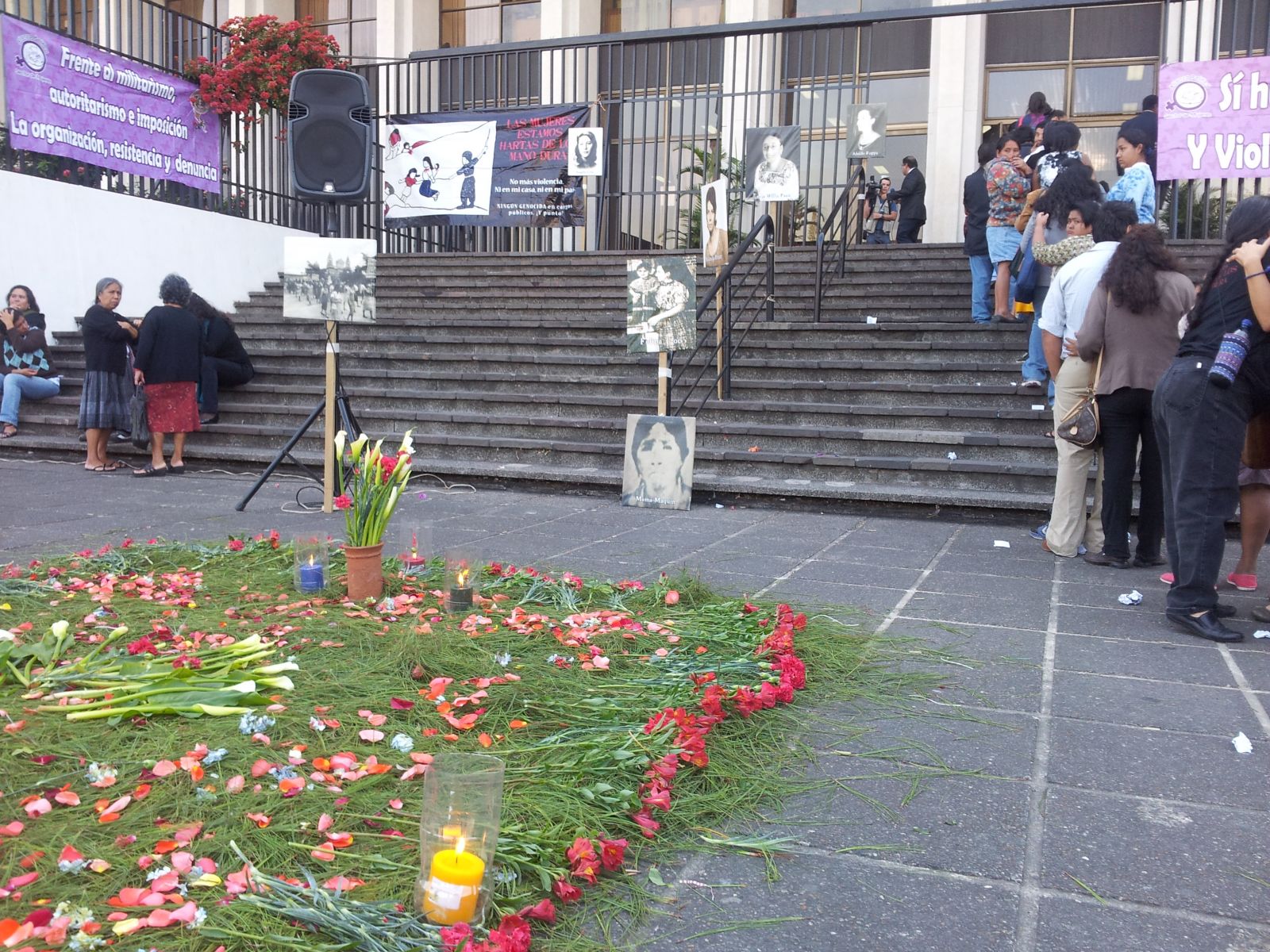
CONCLUSION
Based on the first four days of the trial, my impression is that, besides the simultaneous Ixil -Spanish translation, no effort was made to integrate Maya Ixil customary law or even show respect for the specific culture and values of the Ixil survivors testifying.
I cannot say that this surprised me. Although efforts have been made in a number of States including Canada to “indigenize” their legal systems when the parties involved are indigenous, this is something that most States struggle with, if not resist. My understanding is that Guatemala has not made many advances in this area yet, despite the fact that the majority of its citizens are Indigenous.
Furthermore, considering that the Tribunal is already being criticized by many sectors of Guatemalan society as being biased in favour of the Ixil victims, any attempts to “mayanize” the trial would no doubt have strengthened this impression and been fiercely attacked by the defence as not respecting the due penal process.
ven, 04/19/2013 – 13:46 — PAQG
Pour lire l’article depuis la source originale:
http://www.asfcanada.ca/fr/blogue/billet/the-rios-montt-trial-have-any-efforts-been-made-to-integrate-the-mayan-perspective/178
Traduction
LE PROCÈS CONTRE RIOS MONTT ET RODRIGUEZ SANCHEZ : LA NATURE DES ACCUSATIONS
En fin de matinée du premier jour du procès, le 19 mars 2013, suite aux multiples recours dilatoires des avocats de la défense, la juge Jazmin Barrios a lu les faits allégués dans l’acte d’accusation contre l’ancien général Efrain Rios Montt. Ces faits soutiennent l’accusation de génocide et de crimes contre l’humanité en vertu du Code pénal guatémaltèque dont il fait l’objet.
L’ancien dictateur est accusé d’avoir été l’auteur indirect des massacres qui ont eu lieu contre la population maya ixil lorsqu’il était chef d’État en 1982 et 1983. Les Ixils sont une des communautés autochtones maya du nord-ouest du Guatemala.
Le Ministère public soutient que les militaires ciblaient particulièrement les Ixils, parce qu’ils les avaient identifiés comme étant « à 100% » membres de «l’ennemi intérieur», du à leur soutien allégué à la guérilla. Inclus dans ce 100% étaient femmes, aînés et enfants.
Auteur indirect
Le Ministère public cherchera à démontrer que le général Rios Montt a approuvé les plans militaires qui ont servi de base pour la planification et l’exécution des opérations contre les Ixils. Plus précisément, M. Rios Montt aurait autorisé les plans de campagne militaire « Victoria 82 », « Firmeza 83 », « Sofia », et la « Apreciacion de Asuntos Civiles (G-5) ». Certains de ces documents mentionnent spécifiquement que les Mayas ixil sont « à 100% » une base d’appui aux groupes guérilleros.
En plus d’avoir approuvé les plans de campagne militaires, le Général Rios Montt recevait des rapports très réguliers de ses troupes sur les méthodes utilisées sur le terrain pour mettre en œuvre les plans militaires. Par ailleurs, il ciblait spécifiquement les Ixils dans ses messages dominicaux publics, diffusés à la radio à travers le pays.
Ces éléments seront utilisés par la poursuite pour montrer que le général Rios Montt avait planifié la stratégie de destruction du peuple Maya ixil, et qu’il était tout à fait conscient des méthodes précises mises en œuvre pour la mener à terme.
Actes spécifiques
L’acte d’accusation du Ministère public indique notamment que, sous la direction du Général Rios Montt, les militaires ont exécuté les actes suivants :
• Exécutions sélectives d’individus appartenant à la communauté Maya ixil;
• Massacres collectifs de Mayas ixil;
• Destruction de maisons, récoltes, animaux domestiques et villages entiers ixil;
• Bombardements de communautés et de lieux sacrés ixil;
• Violences sexuelles individuelles et collectives à l’endroit de femmes ixil;
• Esclavage et travail forcé d’enfants, de femmes et d’hommes mayas ixil;
• Persécution et torture de personnes ixil refugiées.
M. Rios Montt est aussi accusé d’avoir mis en place une politique de contrôle de la population ixil notamment par le biais de « villages modèles » pour les survivants des massacres. Dans ces villages, les survivants des massacres auraient été endoctrinés pour suivre le mode de vie de la majorité non autochtone du pays (politica de ladinización y conversión al modo nacional).
Dans ces villages, les Mayas ixil n’auraient pas pu pratiquer leurs activités culturelles et spirituelles et se seraient vu imposés des pratiques religieuses et culturelles différentes des leurs. Les survivants auraient aussi été obligés à s’enrôler dans les groupes paramilitaires et à appuyer les campagnes antisubversives. Les autochtones devaient notamment attaquer les villages de leur propre communauté ethnique maya ixil.
Sans surprise pour un procès pour génocide, l’acte d’accusation met beaucoup d’emphase sur l’intention des accusés de détruire physiquement partiellement ou totalement la population ixil, par le biais des massacres de la population. L’acte décrit aussi comment leur objectif était de briser le tissu social maya ixil et d’effacer les caractéristiques immatérielles qui identifient le peuple ixil comme groupe ethnique (langue, vêtements, culture, pratiques religieuses, etc..).
Rodriguez Sanchez
En fin de matinée de la première journée du procès, la juge Barrios a aussi fait un résumé des faits allégués concernant José Mauricio Rodriguez Sanchez, chef du renseignement militaire sous Rios Montt. Ils sont très similaires à ceux reprochés à M. Rios Montt.
Preuve
Le Ministère public devra prouver les faits allégués par le biais de témoignages de survivants ixil des massacres, de témoins experts et de documentation, ce qui occupera le tribunal pour la majorité de la durée du procès. Il est important de mentionner toutefois que les stratégies militaires contre la population ixil et les moyens pour les mettre en œuvre ont déjà été décrits dans les grandes lignes dans deux rapports historiques, un produit par la Commission pour l’éclaircissement historique (Comisión para el esclarecimiento historico (« CEH »)) et l’autre par l’Office des droits de l’Homme de l’Archevêché du Guatémala, le rapport portant sur la « récupération de la mémoire historique », mieux connu sous le nom de rapport « Guatemala Nunca Mas » ou « REHMI » .
